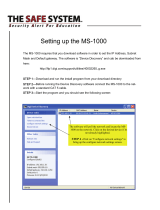
Overview 9
1
Overview
In order to provide new and robust server management capabilities,
the Unified Server Configurator/Unified Server Configurator - Lifecycle
Controller Enabled (USC/USC-LCE) software product has been enhanced to
include additional remote services functionality. Since this addition allows for
a comprehensive approach to server management, the entire set of software
components is now called Dell™ Lifecycle Controller.
The Lifecycle Controller software
components are built upon the integrated
Dell Remote Access Controller 6 (iDRAC6) Express card and the Unified
Extensible Firmware Infrastructure (UEFI) system firmware. The iDRAC6
works together with the UEFI firmware to access and manage every aspect of
the hardware, including component and subsystem management that is beyond
the traditional BMC (Baseboard Management Controller) capabilities.
Remote server management is accomplished using the network for
programmatic web services, while command line (CLI) and graphical user
interfaces (GUI) are provided by the iDRAC6 card in an operating system-and
system-power-state independent manner. The UEFI environment provides the
local console interface, and the infrastructure for locally and remotely managing
system components.
The remote services functionality enables consoles, such as the Dell Management
Console (DMC) and partner consoles, to access Lifecycle Controller features in
a pre-operating system environment. USC/USC-LCE provides an
embedded
solution on the local server to assist with provisioning in a pre-operating
system environment.
Remote Services
Remote services are accessible over the network using a secured web services
interface and can be programmatically utilized by applications and scripts.
Remote services enables existing consoles to perform one-to-many bare metal
server provisioning. The combination of a new Auto-discovery feature to
identify and authenticate the attached Dell system to the network and
integration with one-to-many management consoles reduces the manual
steps required for server provisioning. Additionally, remote services provides
remotely accessible operating system deployment related features that
LC1_3.book Page 9 Monday, December 7, 2009 3:14 PM




















